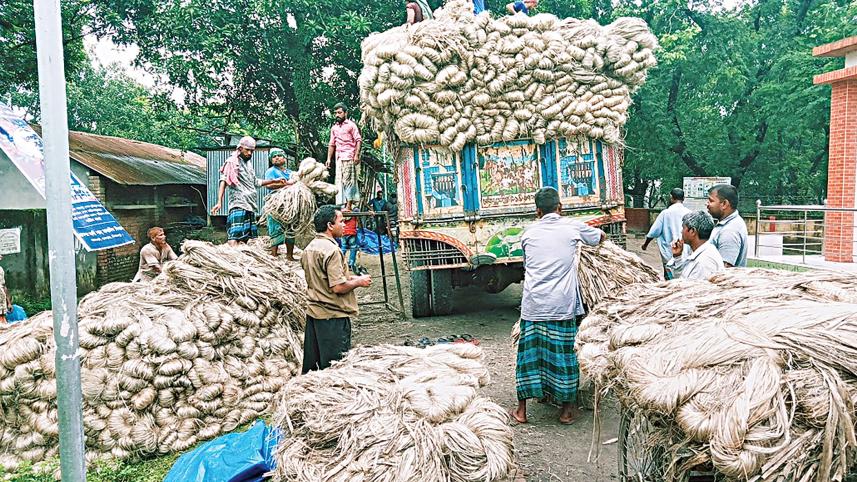Hoarders, exporters dominate jute markets

Allured by the high price of raw jute at the fag end of last year, a section of traders and seasonal buyers are now rushing to stockpile the product.
Each maund (37 kilogrammes) of jute sold for as much as Tk 6,500 at the time while it was just Tk 1,800 not long before, bringing up to three times the profit for sellers.
As such, certain traders and buyers who expect a similar scenario to play out this year have started to hoard the fibrous material.
Besides, a mad dash among exporters to buy jute coupled with the reluctance among farmers to sell the product right now in hopes of better prices in the future has led to a shortage in local markets.
Jute was cultivated on 6.80 lakh hectares to produce 77.25 lakh bales in FY2020-21, down from 6.79 lakh hectares and 80.45 lakh bales the previous year, according to data from the Department of Agricultural Extension (DAE) and Bangladesh Bureau of Statistics.
Major jute exporters and other buyers purchase the product either directly from the farmers or as soon as they reach the market.
As a result, many small jute mills lag behind in collecting their required amounts of raw jute as big buyers create an unhealthy competition that leads to higher production costs as well.
Mahamudar Rahman, a jute trader based in Nilphamari district, said that this year's situation is unlike the past, when jute mills under the Bangladesh Jute Mills Corporation explored the area to source raw jute each season.
"Initially we were confused as to who would purchase raw jute in their absence but the emergence of hoarders, exporters and seasonal buyers gave a new and dynamic shape to the jute market," he added.
Siddiqul Alam, owner of Eque Jute Process in Saidpur upazila, said they managed to buy just 200-300 maunds of jute from the market even though they would get as much as 2,000-3,000 maunds in previous years.
"This is insufficient to run the mill," he added.
Exporters pay their local agents in advance to buy jute at higher prices. The product ultimately leaves the country in the name of export, hindering the development of local mills, Alam said.
During a visit to jute markets in the Jaldhaka and Saidpur upazilas, this correspondent found that buyers were purchasing jute from farmers almost as fast as it was being harvested.
However, the competitive market is a blessing for farmers as each maund now sells for between Tk 2,500 and Tk 3,200 depending on quality.
DAE officials in Nilphamari informed that farmers cultivated jute on 7,000 hectares of land in the district this year while it was 6,800 hectares in 2020, when 15,000 tonnes of the product were collected from the region.
Abdul Gani, a farmer of Sadar upazila's Dolua Dogasi village, said it costs about Tk 10,000 to cultivate jute of ordinary quality on one bigha of land, which produces 8 to 10 maunds of the product.
"The jute can then be sold for a total of about Tk 20,000, bringing farmers double their investment," he added.



 For all latest news, follow The Daily Star's Google News channel.
For all latest news, follow The Daily Star's Google News channel.
Comments